But here my post ID is the primary key, how would I go about having duplicate posts?
You could use an int BUT use it so that it can flag all 1,2 or all 3 sources.
So 0 for no source (if even possible), 1 for home, 2 for group and 4 for user profile.
So 7 would indicate all 3, 6 user profile and group, 5 for user profile and home, 4 just user profile, 3 group and home, 2 just group and 1 for just home.
The alternative would be to have a table for the source and an intermediate table (called names such as associative,mapping,reference table) that has two core columns that form the primary key, one mapping the source, the other mapping the post.
By mapping a reference to unique column, typically the id column. This forms a many-many relationship so a source can have many (0-n) posts and a post can have many (0-n) sources.
This has the advantage that it can cope with billions of both sources and posts that is it can easily cater for new sources. Whilst the number of sources for the first (int method) is more limited.
here's a working example that demonstrates both.
First the Post (Entity) class which will be used by both methods:-
@Entity
class Post {
/* For if Source is used as an int */
static final int SOURCE_USERPROFILE = 4;
static final int SOURCE_GROUP = 2;
static final int SOURCE_HOME = 1;
@PrimaryKey
Long postId=null;
String postData;
int postSource=0; /* For if source is used as an int */
Post(){}
@Ignore
Post(String postData, boolean sourceHome, boolean sourceGroup, boolean sourceUserProfile) {
this.postData = postData;
int source = 0;
if (sourceHome) {
source = source + Post.SOURCE_HOME;
}
if (sourceGroup) {
source = source + Post.SOURCE_GROUP;
}
if (sourceUserProfile) {
source = source + Post.SOURCE_USERPROFILE;
}
this.postSource = source;
}
}
For the 2nd Method (many-many) the Source (Entity) class :-
@Entity
class Source {
@PrimaryKey
Long sourceId=null;
String sourceName;
Source(){}
@Ignore
Source(String sourceName) {
this.sourceName = sourceName;
}
}
Again for the 2nd Method the PostSourceMap (Entity) class :-
@Entity(
primaryKeys = {"postIdMap","sourceIdMap"} /* composite primary key */
/* Optional BUT ensures referential integrity */
, foreignKeys = {
@ForeignKey(
entity = Post.class
,parentColumns = {"postId"}
,childColumns = {"postIdMap"}
/* Optional BUT automatically maintains referential integrity */
, onDelete = ForeignKey.CASCADE
, onUpdate = ForeignKey.CASCADE
),
@ForeignKey(
entity = Source.class
,parentColumns = {"sourceId"}
,childColumns = {"sourceIdMap"}
,onDelete = ForeignKey.CASCADE
,onUpdate = ForeignKey.CASCADE
)
}
)
class PostSourceMap {
long postIdMap;
@ColumnInfo(index = true)
long sourceIdMap;
PostSourceMap(){}
@Ignore
PostSourceMap(long postIdMap, long sourceIdMap) {
this.postIdMap =postIdMap;
this.sourceIdMap = sourceIdMap;
}
}
- As per the comment ForeignKey definitions aren't required, they do however enforce referential integrity.
For method 2 you would very likely to be able to retrieve a Post along with it's Sources, so a POJO class PostWithSources to facilitate this :-
class PostWithSources {
@Embedded
Post post;
@Relation(
entity = Source.class,
parentColumn = "postId",
entityColumn = "sourceId",
associateBy = @Junction(
value = PostSourceMap.class,
parentColumn = "postIdMap",
entityColumn = "sourceIdMap"
)
)
List<Source> sources;
}
To be able to insert and extract data an @Dao annotated abstract class (could be an interface) AllDao :-
@Dao
abstract class AllDao {
@Insert(onConflict = OnConflictStrategy.IGNORE)
abstract long insert(Post post);
@Insert(onConflict = OnConflictStrategy.IGNORE)
abstract long insert(Source source);
@Insert(onConflict = OnConflictStrategy.IGNORE)
abstract long insert(PostSourceMap postSourceMap);
@Query("SELECT * FROM post")
abstract List<Post> getAllPosts();
@Transaction
@Query("SELECT * FROM post")
abstract List<PostWithSources> getAllPostsWithSources();
}
To tie it altogether from a Room perspective, an @Dataabase annotated abstract class :-
@Database(entities = {Post.class, Source.class, PostSourceMap.class}, exportSchema = false, version = 1)
abstract class TheDatabase extends RoomDatabase {
abstract AllDao getAllDao();
private static volatile TheDatabase instance;
static TheDatabase getInstance(Context context) {
if (instance==null) {
instance = Room.databaseBuilder(context,TheDatabase.class,"the_database.db")
.allowMainThreadQueries()
.build();
}
return instance;
}
}
- Note that for the first method it would be changed to use
entities = {Post.class}. i.e. only the single table.
To put the above into action and insert some data then a basic activity MainActivity :-
public class MainActivity extends AppCompatActivity {
TheDatabase db;
AllDao dao;
@Override
protected void onCreate(Bundle savedInstanceState) {
super.onCreate(savedInstanceState);
setContentView(R.layout.activity_main);
db = TheDatabase.getInstance(this);
dao = db.getAllDao();
long p1Id = dao.insert(new Post("POST DATA001",true,true,true));
long p2Id = dao.insert(new Post("POST DATA002", false,true,true));
long p3Id = dao.insert(new Post("POST DATA003", false,false,true));
/* Add the Sources (easy to add more) */
long s1Id = dao.insert(new Source("HOME"));
long s2Id = dao.insert(new Source("GROUP"));
long s3Id = dao.insert(new Source("USERPROFILE"));
/* Map the posts with the sources */
dao.insert(new PostSourceMap(p1Id,s1Id));
dao.insert(new PostSourceMap(p1Id,s2Id));
dao.insert(new PostSourceMap(p1Id,s3Id));
dao.insert(new PostSourceMap(p2Id,s2Id));
dao.insert(new PostSourceMap(p2Id,s3Id));
dao.insert(new PostSourceMap(p3Id,s3Id));
}
}
When the above is run then the database consist of the following (as shown via App Inspection):-
Post table :-

For the first method, the other tables are irrelevant what matters, as far as sources is concerned is the postSource value.
For the second method the postSource value is redundant.
Source table :-

- This is only relevant for the second method and contains a row for each source.
PostSourceMap table :-

Again this is only relevant for the second method.
The postIdMap is the postId of the respective Post
The sourceIdMap is the sourceId of the respective Source.
Together they tie a Post to a Source.
Typically the table is only used to determine which Post has which Sources or vice-versa.
as can be seen from examining the rows in the table:-
- There 3 rows that have 1 in the PostIdMap column, so the Post with an id of 1 has 3 related Sources (i.e. all 3)
- The are 2 rows that have 2 in the PostIdMap column, so the Post with an id of 2 has two related Sources (Source that has id 2 and Source that has id 3)
- There is one rows that has 3 in the PostIdMap column, so the Post with an id of 3 has just the 1 Source (id 3).
You could view the data from the perspective of the Source. In which case it can be seen that
- Source (id 3) has 3 related Posts,
- Source (id 2) has 2 related Posts,
- Source (id 1) has 1 related Post.


